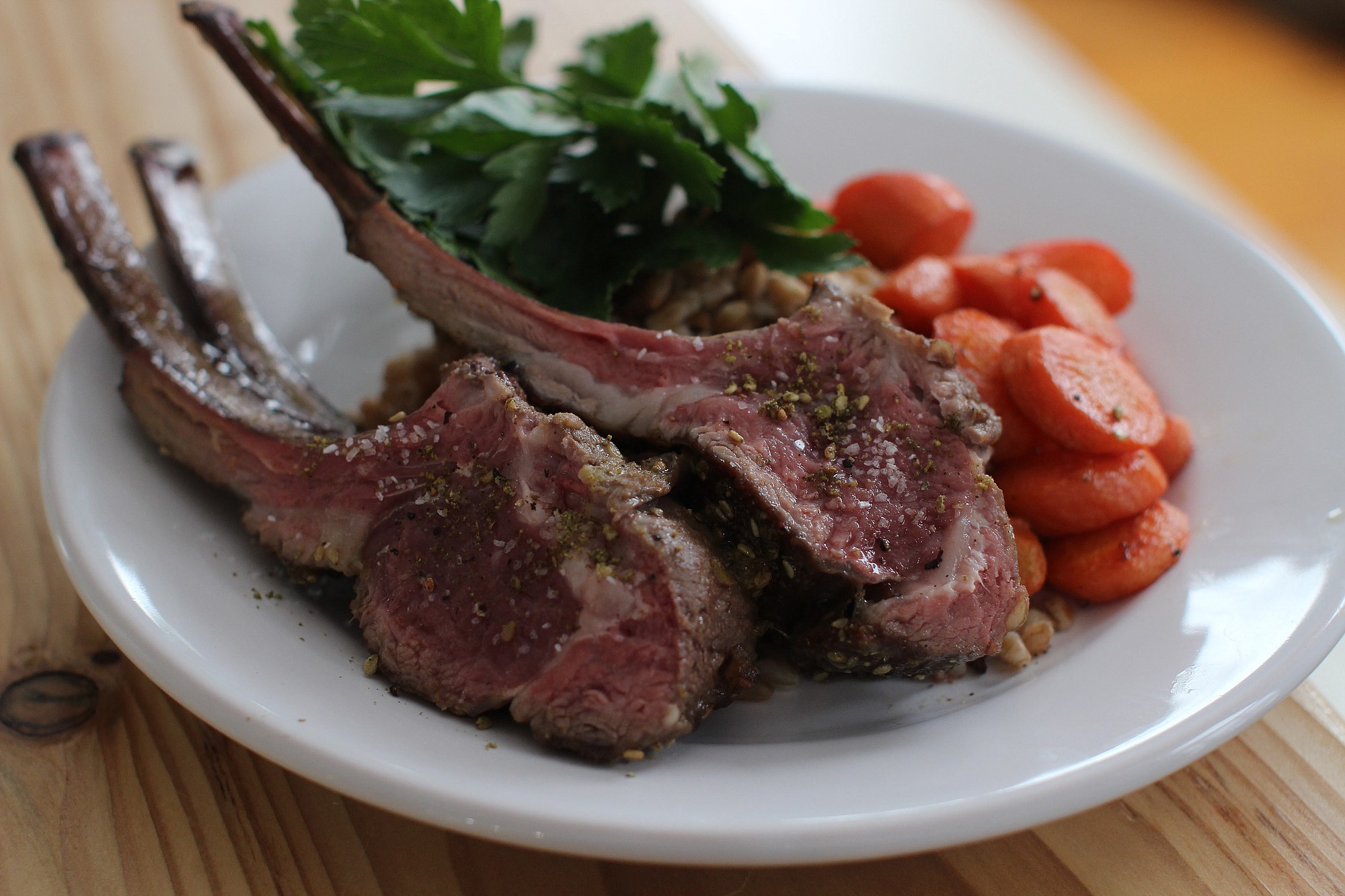When I was growing up in Dubai, my favorite afterschool snack was “manaeesh bi za’atar,” a warm flatbread smeared with a deep green paste made of olive oil and the beloved Middle Eastern spice blend, za’atar. Rolled up with some creamy lebneh (thick yogurt) and fresh tomatoes, it’s still the snack I crave today.
Za’atar (pronounced ZAH-tur; the apostrophe signifies a guttural sound native to Arabic) actually is the name of a wild herb that somewhat resembles oregano in flavor. The herb originally was used to make the spice blend, but here in the U.S., you’re more likely to find a blend of dried thyme, oregano and marjoram, flecked with toasted sesame seeds and ground sumac, a magenta berry that packs a delightfully sour punch.
The recipe varies by family and region: The Lebanese use a lot of sumac, while the Palestinians add a little nutty caraway. No matter its composition, you’ll find za’atar on everything from pastries and bread to salads and kebabs. It’s usually sold alongside other seasonings in either the spice or international aisle.
It pairs particularly well with lamb, a meat I think of in spring.
Honey Za’atar Glazed Rack of Lamb
Start to finish: 40 minutes (15 minutes active). Servings: 4
Za’atar is available in the spice or international aisles of most larger grocers. Before starting the recipe, check the label of the za’atar. If it contains salt, cut back on the amount of salt you add during cooking.
2 racks of lamb (each weighing about 1 1/2 pounds), Frenched and trimmed of fat and silver skin
1/4 teaspoon kosher salt, plus more for seasoning
Ground black pepper
2 teaspoons za’atar, plus extra
2 tablespoons honey
1 teaspoon lemon zest
2 teaspoons lemon juice
1 teaspoon apple cider vinegar
1 teaspoon Dijon mustard
2 to 3 tablespoons sunflower or canola oil
Heat the oven to 400 degrees. Line a rimmed baking sheet large enough to hold both racks of lamb with foil. Set the baking sheet in the oven. Season the lamb racks with salt, pepper and a light dusting of za’atar. Set aside at room temperature while you prepare the glaze.
In a small bowl, stir together 2 teaspoons za’atar, the honey, lemon zest and juice, vinegar and mustard, along with a hefty pinch of salt. Set aside.
In a large skillet over medium-high, heat the oil until shimmering. One at a time, add the racks of lamb, meat-side down. Cook until golden brown with a nice crust, about 3 to 4 minutes. Carefully flip, then brown on the other sides for another 3 to 4 minutes. Carefully remove the heated baking sheet from the oven. Transfer the lamb to baking sheet, meat-side up. Paint honey-za’atar mixture onto the meat with a pastry brush, making sure to brush the bottoms and sides, too. Place the lamb in the oven and roast for 12 to 15 minutes, or until the meat at the center of the rack reads 135 F.
Remove the lamb from the oven, cover loosely with foil and allow to rest for 10 minutes. Slice the lamb bones into either single or double chops, sprinkle with a little extra salt, pepper and za’atar.
per serving: 420 calories; 230 calories from fat (55 percent of total calories); 26 g fat (7 g saturated; 0 g trans fats); 120 mg cholesterol; 9 g carbohydrate; 0 g fiber; 9 g sugar; 37 g protein; 540 mg sodium.



